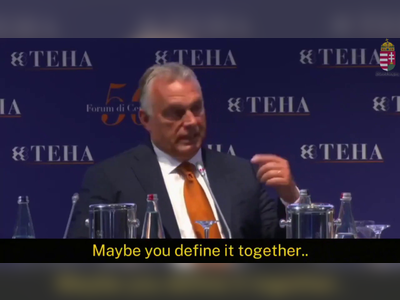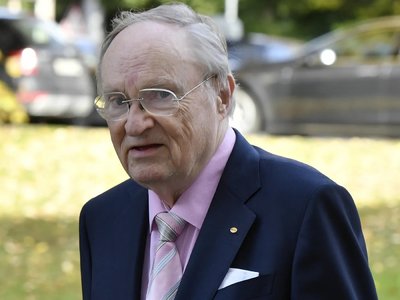Let’s all please stop calling dollars ‘fiat money’. They are not fiat and they are not money.
The US Dollar is not a money, as it is not backed up by government or assets. It is a virtual credit note, created out of nothing (just a number added onto a balance sheet), and backed up by nothing but a “promise” to pay it back. The Federal Reserve can create endless US Dollars out of nothing, without having anything on their own to back it up aside from the ability to create just more of the same nothing. The Fed “gives” this nothing as a “credit” in exchange for whatever they accept as collateral, whether the collateral is really worth anything or not. And if the debtor fails to pay it back, the Fed just creates more nothing to bail them out, as often as necessary. The AIG vicious circle, for instance, is a prime example.
Sometimes it’s possible to simplify something too much. More than a decade ago Ben Bernanke, then chair of the Federal Reserve’s Board of Governors, sat down for an interview with 60 Minutes, the television show that important Americans call when they have important things to say.
Bernanke was explaining how the Fed had responded to the financial crisis. When he got to the asset purchase programmes, the host asked whether the Fed was spending taxpayers’ money.
“It’s not tax money,” Bernanke said. “The banks have accounts with the Fed, much the same way that you have an account in a commercial bank. So to lend to a bank, we simply use the computer to mark up the size of the account that they have at the Fed.” The host asked him whether the Fed had been printing money. “Well,” said Bernanke, “effectively.”
He wasn’t wrong, of course. He’s Ben Bernanke. You might disagree with his policy choices, but he certainly knows how money is created.
That quote from 60 Minutes, though, still comes up, often, more than a decade later. When Bernanke simplified what the Fed does, he confirmed for a lot of people the deeply mistaken idea that the Fed simply magics up dollars out of nothing and then, by fiat, says “There. That’s money.”
There’s a problem with the word “fiat.” We use it to describe our current monetary system. Then we teach undergraduates that the word comes from the Italian for decree, or edict. We tell them that fiat money is a social convention. It has value because the government says it does, and everyone agrees. Cameron Winklevoss, co-founder of the crypto exchange Gemini, says that “all money is a meme.” That’s what he was taught at Harvard while he was doing the other thing he’s famous for.
This is unfortunately not at all how money works. The first description I could find of money as “fiat” comes from John Stuart Mill, the English philosopher, in Principles of Political Economy. Mill proposed a hypothetical: suppose a government began paying salaries in a paper money that couldn’t be converted on demand into silver or gold. The value of that money, he wrote, “would depend on the fiat of the authority”.
Well, yeah. If the US Department of the Treasury were to print up carnival tickets, spend them into the economy and call them dollars, the value of those dollars would depend on the fiat of Congress. But that’s not what the Treasury does, and that’s not what a dollar is.
If you live in the US, the dollars you use most often in your daily life are bank dollars. Your bank creates them when it loans you money, then deposits them in your account.
Bank dollars don’t have value just because your bank says they do. Your bank has regulators poking into its books, to make sure those loans are sound assets with decent returns. And your bank pays premiums to the Federal Deposit Insurance Corporation, to guarantee your deposits in case it fails anyway. If bank dollars are just a social convention — a meme — then your mortgage is just a meme, too.
Now, take the Fed. It’s just a special bank. Like Bernanke said, commercial banks have deposit accounts at the Fed. When the Fed lends them money, it marks up their accounts with dollars we call reserves. And, just like when the commercial banks lend you money, those reserves are a liability for the Fed. But there’s a crucial part of the process that didn’t make it into 60 Minutes: when the Fed marks up those accounts, it’s also buying assets. It swaps, one for one: reserves for assets.
When we say the Fed is printing money, we imply that there was nothing, and now there is something. Ta da! But again, that’s not at all what happens. The Fed has to buy something. Usually it’s a Treasury bill, but in an emergency it can be a more questionable asset. Then the Fed credits back reserves. To believe those reserves are just a meme, you have to believe the assets are just a meme. But they aren’t. Don’t take my word for it. The Fed’s assets provide a return, every year, lean years and fat years, without fail.
OK. Now let’s do the Department of the Treasury. It has an account at the Fed, too, but it cannot just magic dollars out of its account. The Treasury can put dollars in its account collecting taxes, or by selling Treasury bills. There is no fiat, no decree. There is no money printer, anywhere. It’s all transactions on a balance sheet, assets for liabilities.
Now: you may believe that all those mortgages and credit card loans are meaningless assets. You may believe the US government will not be able to collect enough taxes to roll over those Treasury bills. If you are right, then yes, the dollar has no value. But we’re still not talking about trusting anyone’s fiat. We’re talking about credit analysis. So, please: let’s stop calling it fiat money. Let’s start calling it what it is: credit money.
Bernanke was explaining how the Fed had responded to the financial crisis. When he got to the asset purchase programmes, the host asked whether the Fed was spending taxpayers’ money.
“It’s not tax money,” Bernanke said. “The banks have accounts with the Fed, much the same way that you have an account in a commercial bank. So to lend to a bank, we simply use the computer to mark up the size of the account that they have at the Fed.” The host asked him whether the Fed had been printing money. “Well,” said Bernanke, “effectively.”
He wasn’t wrong, of course. He’s Ben Bernanke. You might disagree with his policy choices, but he certainly knows how money is created.
That quote from 60 Minutes, though, still comes up, often, more than a decade later. When Bernanke simplified what the Fed does, he confirmed for a lot of people the deeply mistaken idea that the Fed simply magics up dollars out of nothing and then, by fiat, says “There. That’s money.”
There’s a problem with the word “fiat.” We use it to describe our current monetary system. Then we teach undergraduates that the word comes from the Italian for decree, or edict. We tell them that fiat money is a social convention. It has value because the government says it does, and everyone agrees. Cameron Winklevoss, co-founder of the crypto exchange Gemini, says that “all money is a meme.” That’s what he was taught at Harvard while he was doing the other thing he’s famous for.
This is unfortunately not at all how money works. The first description I could find of money as “fiat” comes from John Stuart Mill, the English philosopher, in Principles of Political Economy. Mill proposed a hypothetical: suppose a government began paying salaries in a paper money that couldn’t be converted on demand into silver or gold. The value of that money, he wrote, “would depend on the fiat of the authority”.
Well, yeah. If the US Department of the Treasury were to print up carnival tickets, spend them into the economy and call them dollars, the value of those dollars would depend on the fiat of Congress. But that’s not what the Treasury does, and that’s not what a dollar is.
If you live in the US, the dollars you use most often in your daily life are bank dollars. Your bank creates them when it loans you money, then deposits them in your account.
Bank dollars don’t have value just because your bank says they do. Your bank has regulators poking into its books, to make sure those loans are sound assets with decent returns. And your bank pays premiums to the Federal Deposit Insurance Corporation, to guarantee your deposits in case it fails anyway. If bank dollars are just a social convention — a meme — then your mortgage is just a meme, too.
Now, take the Fed. It’s just a special bank. Like Bernanke said, commercial banks have deposit accounts at the Fed. When the Fed lends them money, it marks up their accounts with dollars we call reserves. And, just like when the commercial banks lend you money, those reserves are a liability for the Fed. But there’s a crucial part of the process that didn’t make it into 60 Minutes: when the Fed marks up those accounts, it’s also buying assets. It swaps, one for one: reserves for assets.
When we say the Fed is printing money, we imply that there was nothing, and now there is something. Ta da! But again, that’s not at all what happens. The Fed has to buy something. Usually it’s a Treasury bill, but in an emergency it can be a more questionable asset. Then the Fed credits back reserves. To believe those reserves are just a meme, you have to believe the assets are just a meme. But they aren’t. Don’t take my word for it. The Fed’s assets provide a return, every year, lean years and fat years, without fail.
OK. Now let’s do the Department of the Treasury. It has an account at the Fed, too, but it cannot just magic dollars out of its account. The Treasury can put dollars in its account collecting taxes, or by selling Treasury bills. There is no fiat, no decree. There is no money printer, anywhere. It’s all transactions on a balance sheet, assets for liabilities.
Now: you may believe that all those mortgages and credit card loans are meaningless assets. You may believe the US government will not be able to collect enough taxes to roll over those Treasury bills. If you are right, then yes, the dollar has no value. But we’re still not talking about trusting anyone’s fiat. We’re talking about credit analysis. So, please: let’s stop calling it fiat money. Let’s start calling it what it is: credit money.
AI Disclaimer: An advanced artificial intelligence (AI) system generated the content of this page on its own. This innovative technology conducts extensive research from a variety of reliable sources, performs rigorous fact-checking and verification, cleans up and balances biased or manipulated content, and presents a minimal factual summary that is just enough yet essential for you to function as an informed and educated citizen. Please keep in mind, however, that this system is an evolving technology, and as a result, the article may contain accidental inaccuracies or errors. We urge you to help us improve our site by reporting any inaccuracies you find using the "Contact Us" link at the bottom of this page. Your helpful feedback helps us improve our system and deliver more precise content. When you find an article of interest here, please look for the full and extensive coverage of this topic in traditional news sources, as they are written by professional journalists that we try to support, not replace. We appreciate your understanding and assistance.









